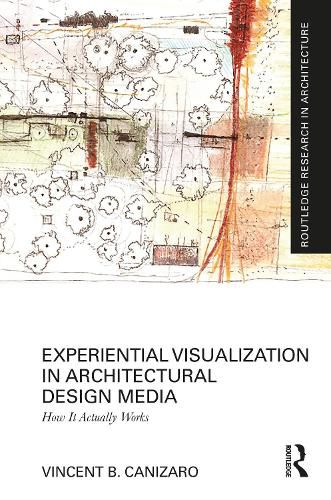Readings Newsletter
Become a Readings Member to make your shopping experience even easier.
Sign in or sign up for free!
You’re not far away from qualifying for FREE standard shipping within Australia
You’ve qualified for FREE standard shipping within Australia
The cart is loading…






Experimental Visualization in Architectural Design Media: How It Actually Works is a theoretical, practical, and interdisciplinary account of the tools used by architects and designers. The book focuses on the how these tools influence their ability to envision and craft the future experiential reality of buildings and environments. The book is structured around two parallel sets of questions. The first, concerns the effects of various media on the designer's understanding of their work in experiential terms. The media considered include the process of design-build, standard media such as scale model building, hand drawing, drafting, and extends into the now dominant digitally based design media of BIM, digital modeling, and emerging VR technologies, such as Enscape. The second line of questioning seeks patterns of use and other attributes designers deploy in practice to achieve an experiential and meaningful understanding of their work, with and through each medium.
To answer these questions, the author provides a detailed assessment of the pros and cons (affordance and constraint) of each form of mediation, and a set of recommendations documenting how experienced designers enhance their visualization skills to support such experiential design. This work is interwoven with interdisciplinary consideration of technology, perception, media studies, history and bolstered by the direct experiences of design professionals.
This book will be of interest to researchers working in the field of architecture and design, as well as practising architects, designers and students who are seeking guidance on how to effectively design and consider the experience of their future built environments.
$9.00 standard shipping within Australia
FREE standard shipping within Australia for orders over $100.00
Express & International shipping calculated at checkout
Experimental Visualization in Architectural Design Media: How It Actually Works is a theoretical, practical, and interdisciplinary account of the tools used by architects and designers. The book focuses on the how these tools influence their ability to envision and craft the future experiential reality of buildings and environments. The book is structured around two parallel sets of questions. The first, concerns the effects of various media on the designer's understanding of their work in experiential terms. The media considered include the process of design-build, standard media such as scale model building, hand drawing, drafting, and extends into the now dominant digitally based design media of BIM, digital modeling, and emerging VR technologies, such as Enscape. The second line of questioning seeks patterns of use and other attributes designers deploy in practice to achieve an experiential and meaningful understanding of their work, with and through each medium.
To answer these questions, the author provides a detailed assessment of the pros and cons (affordance and constraint) of each form of mediation, and a set of recommendations documenting how experienced designers enhance their visualization skills to support such experiential design. This work is interwoven with interdisciplinary consideration of technology, perception, media studies, history and bolstered by the direct experiences of design professionals.
This book will be of interest to researchers working in the field of architecture and design, as well as practising architects, designers and students who are seeking guidance on how to effectively design and consider the experience of their future built environments.